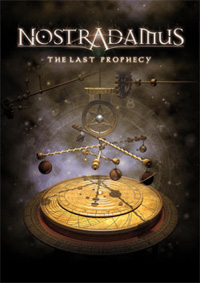 | |
| Developers | Kheops Studio, Mzone Studio, TOTM Studio, Anuman Interactive |
|---|---|
| Publishers | Elektrogames, Kheops Studio, Mzone Studio, TOTM Studio, MC2, Encore, Anuman Interactive |
| Platforms | Windows, Mac OS X, iOS |
| Release | Windows Mac OS X June 2010 iOS December 18, 2010 (Part 1) January 28, 2011 (Part 2) |
| Genre | Adventure |
| Mode | Single-player |
Nostradamus: The Last Prophecy is an adventure video game developed by Kheops, Mzone and Totm. It was a co-production by Elektrogames, Kheops Studio, MC2, Mzone, Totm, and Anuman Interactive, and is published in the US by MC2.